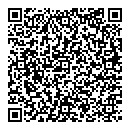
07 dic 2024
The introduction of a credit license requirement for non-construction companies and self-employed individuals operating in temporary or mobile worksites marks a significant regulatory shift.
Effective from October 1st, this mandate excludes those providing mere supplies or intellectual services and companies with SOA certification of class III or higher.
The digital license is obtained via the National Labor Inspectorate's portal, with interim measures allowing operations until October 31, 2024, under certain conditions.
The process involves specific documentation and compliance with existing safety and fiscal regulations.
This commentary explores the implications, potential challenges, and opportunities arising from this new requirement.

The recent regulatory change mandating a credit license for non-construction companies and self-employed individuals working in temporary or mobile worksites represents a notable development in the industry. This requirement, effective from October 1st, aims to ensure that all entities physically operating in these environments adhere to specific standards, thereby enhancing safety and compliance. Notably, this mandate does not apply to those engaged solely in providing supplies or intellectual services, such as engineers, architects, and surveyors, nor to companies already possessing an SOA certification of class III or higher. The process for obtaining this digital license is facilitated through the National Labor Inspectorate's (Inl) online portal, accessible via SPID or CIE. Applicants can continue their activities while awaiting the license, unless notified otherwise by the Inspectorate, which may intervene if it identifies any deficiencies in the applicant's qualifications. To mitigate the risk of a 'click day' scenario, the Inl has issued a circular allowing for the submission of a model attached to the circular, which includes a self-certification or substitute declaration regarding the possession of the necessary qualifications. This interim measure is valid until October 31, 2024, after which operations cannot continue based solely on the submission of the self-certification. The application for the credit license can be submitted by the legal representative of the company or the self-employed individual, either directly or through a delegated party, such as labor consultants, accountants, lawyers, or tax assistance centers (Caf). The issuance of the license requires several prerequisites: registration with the Chamber of Commerce, compliance with the training obligations outlined in Legislative Decree No. 81/2008, possession of a valid Single Document of Contribution Regularity (DURC), a Risk Assessment Document (DVR) where applicable, fiscal compliance certification, and the appointment of a Prevention and Protection Service Manager (RSPP) where required by current legislation. It is important to note that not all requirements apply to every category of interested parties. For instance, the DVR is not required for self-employed individuals and companies without employees. Registration with the Chamber of Commerce, possession of the DURC, and fiscal compliance certification can be self-certified, while training compliance, possession of the DVR, and RSPP designation require substitute declarations. Foreign companies and self-employed individuals must submit a self-certification of possessing an equivalent document to the credit license (for EU countries) or one that attests to its recognition under Italian law (for non-EU countries) via the Inl portal. Alternatively, they must apply for the license in the same manner as Italian companies and self-employed individuals. The license is subject to revocation if any false declarations regarding the possession of one or more requirements are discovered during subsequent inspections.
Insights
The introduction of the credit license requirement for non-construction companies in temporary worksites underscores a broader trend towards increased regulation and oversight in the industry. This move is likely aimed at ensuring a uniform standard of safety and compliance across all entities operating in these environments, thereby reducing risks and enhancing worker protection. The digital nature of the license process reflects a shift towards more streamlined and accessible regulatory mechanisms, which could serve as a model for other sectors. Opportunities
1. Enhanced Safety Standards: The new requirement could lead to improved safety standards across worksites, benefiting both workers and companies.
2. Regulatory Compliance Services: There is potential for growth in services that assist companies in navigating the new regulatory landscape, such as compliance consulting and training.
3. Digital Transformation: The digitalization of the licensing process presents opportunities for technological advancements and innovations in regulatory compliance tools.
4. Market Differentiation: Companies that quickly adapt to the new requirements may gain a competitive edge by demonstrating their commitment to safety and compliance.
